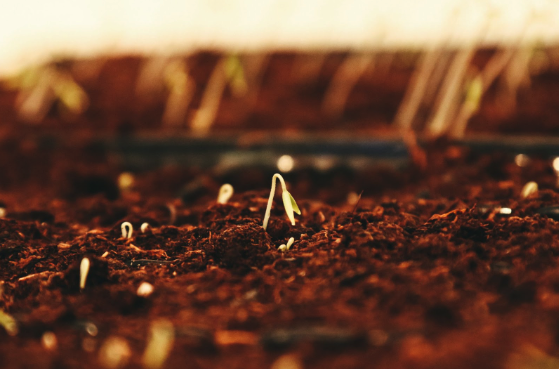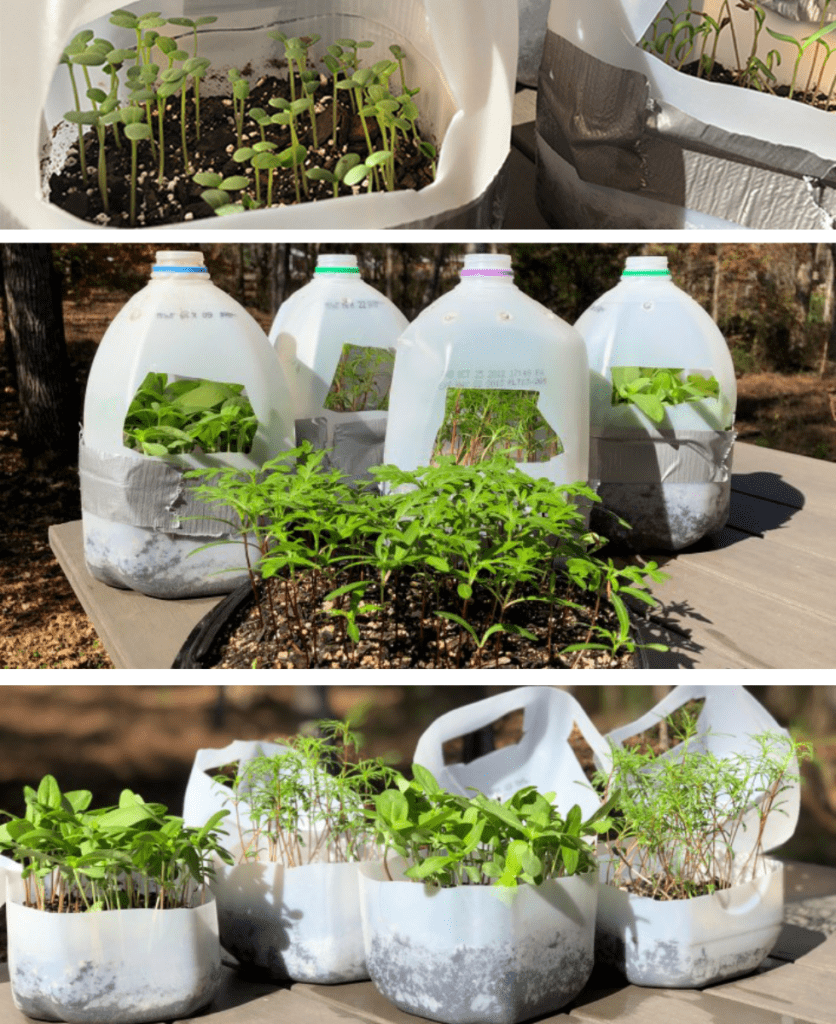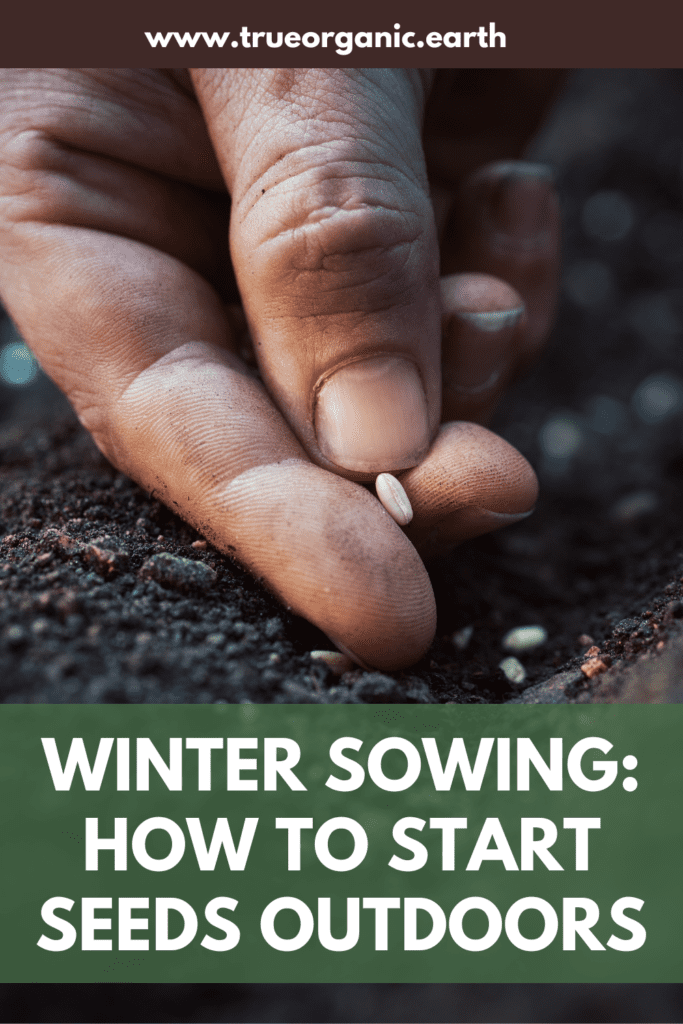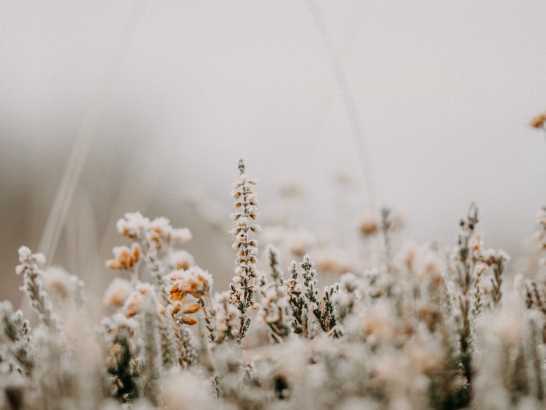January 14, 2023
Winter Sowing: How to Start Seeds Outdoors
Do you like to start your garden with seeds? It’s a super gratifying way to grow plants!
You might have experience with direct sowing (planting seed right into the garden bed where they’ll remain), but starting seedlings outdoors through the winter is a nature-approved method that will become your new favorite garden trick.
It’s called winter sowing and it’s way easier than you think!
Benefits of Winter Sowing
Quick and low-maintenance
Winter sowing is a nearly “set it and forget it” method that gives you hardy, ready-to-plant crops for your spring garden. Preparing the containers is incredibly simple and family-friendly — a great project for kids.
Once you prep and plant your seeds, you’ll leave them outside for months to activate their ability to germinate (a process referred to as scarring or stratifying), watch them sprout into seedlings and harden off all by themselves right in upcycled, reusable containers.
Low-cost and sustainable
Winter sowing is low-cost, simple, and space-efficient. The only materials you need are cleaned plastic containers like milk jugs, scissors, and permanent markers. Oh, and seeds and soil, of course.
It’s a great way to save money on your gardening hobby: seeds are way less expensive (sometimes they’re even free if you use a seed exchange or library). Plus, you’ll have control of the whole process, ensuring that your plants are organic, hardy, and ready to go in the ground.
Find a seed library or exchange near you with the Seed Librarian’s locator map or the Seed Savers Exchange search feature — or do a quick internet search. If you can’t find anything online, visit your local nursery to consult a gardening expert about seed exchanges in your neighborhood. Or start saving your own seeds!
Can’t find an organic seed exchange in your hometown? Start one! Get some pointers from our friends at Phoenix Seed Swap, a small grass-roots seed saving and sharing project in Arizona.
Creates hardy, healthy seedlings
The hardening off process that indoor-grown seedlings need prior to being planted in the ground can be tricky, time-consuming, and stressful.
Seedlings started outside don’t need to be hardened off before planting in the garden — the process of winter sowing does that naturally.
As they germinate and grow outside in natural weather conditions (protected in their containers from getting washed away by rain or dug up by hungry animals), they’re getting used to natural weather conditions and being nourished by natural light. All of that acclimates them to a life outside! They’ll be hardier, stronger, and ready to be happily transplanted into the garden come spring.
No fancy equipment needed
And no greenhouse required, either! Winter sowing is ideal for those with limited indoor space for seed starting. No special lighting or equipment is required for germination.
Winter Sowing Basics
How does winter sowing work?
Winter sowing means planting seeds and tending seedlings in outdoor containers before spring. This process mimics the natural process of seed germination.
Most seeds are dormant and need something to trigger their “wake-up call” before they can germinate. (Thank you, winter!)
Winter sowing does not mean directly sowing your seeds in the ground. They’d be quite unlikely to make it to spring in that case.
What do I need?
- Containers: Gallon milk jugs are the most popular, but other plastic containers with lids work, too.
- Space: You don’t need much! A corner of your yard will do.
- Seeds
- Potting soil
What crops should I sow?
You’ll be surprised at how many varieties are ideal for winter sowing. Many flowering plants, herbs, and edible crops can be sown outside in winter.
So how can you be sure a seed is good for winter sowing?
Start by looking for seeds that are considered “hardy” in your USDA Plant Hardiness Zone.
If you’re using store-bought or online-ordered seeds from a packet, the information on that packet is all you need. You can also get a ton of helpful info from any seed catalog. Even if you aren’t ordering your seeds from a catalog, you can get a free catalog mailed to you from almost any seed company. We recommend going organic!
Look for terms like: reseeding, self-sowing, hardy, withstands frost, sow outdoors in early spring, stratification, and scarification. That means the seed is good for outdoor winter sowing.
When should I sow my seeds?
It depends greatly on the conditions in your area, which you can learn about by identifying your USDA Plant Hardiness Zone (sometimes referred to as Garden Zone). Check it out here.
Generally, your best bet to winter sow perennials and hardy annuals will be December through March (later in that range if you live in a colder climate). These seeds need to chill out in cold temperatures and moist conditions for a while in order to germinate in spring.
For less hardy plants like veggies and other tender annuals, March and April are good times for winter sowing. Those seeds don’t need a cold period before germination. 
Step-by-Step Winter Sowing
Prepare containers
- Clean: Wash a milk jug or other translucent plastic container with soap and rinse well.
- For milk jugs: With a serrated knife or box cutter, just below the handle, cut almost all the way around the jug. Leave about 2 inches as a hinge, so the top part of the jug can open easily. (Skip this step for plastic takeout containers, but save the lid.) You can toss out the milk jug lid.
- Make drainage holes in the bottom of the container. If you’re using a container with a lid, poke a few holes in the lid, too.
Prepare soil
- Fill container with at least 4 inches of organic potting mix. Avoid garden soil which may contain pathogens and weed seeds.
- Lightly water soil and allow it to drain.
- You don’t need to add plant food until the seed germinates and sprouts. Once you have a few leaves, you can use True Organic Preplant Food.
Sow and seal
- Follow the directions on the seed package to sow your seeds.
- If using milk jugs, seal the container around the “seam” with light-colored outdoor-style tape (remember, you want lots of sunlight to get in, so don’t use something like black tape, which will block out light.). Leave the top of the milk jug off so water can enter.
- If using a lidded container, place the lid back on, double-checking that water can get into the holes in the lid.
“Set and forget”
- Label your containers with type of seed and sowing date.
- Choose a secure location outside that gets lots of sun all day and gets some rain or snow. Do not place your containers under an awning — they need moisture!
- Leave them alone! Revisit them when your seedlings start germinating in spring.
A few things to watch out for:
Early spring or a warm spell
If seeds get a burst of warm weather, they could germinate too soon, leaving baby seedlings vulnerable to returning cold weather.
Lack of sun
Be sure the location you choose has good sun all day, especially as Winter days are still short.
Wind and other extreme weather
If a wind storm is coming, move your containers into the garage overnight or place them in a heavy crate until the conditions pass.
Animals
Although your seeds are protected by their containers, animals like mice, birds, and squirrels can be relentless (and quite clever) when it comes to getting some winter nosh. It’s worth checking on your containers every so often to make sure animals aren’t fussing with them or chewing/clawing at them — and moving them to a more secure location, if so.

Show us your True Organic Plants
#GrowWithTrue
www.trueorganic.earth


